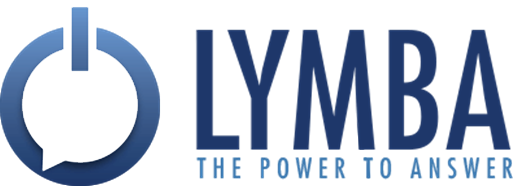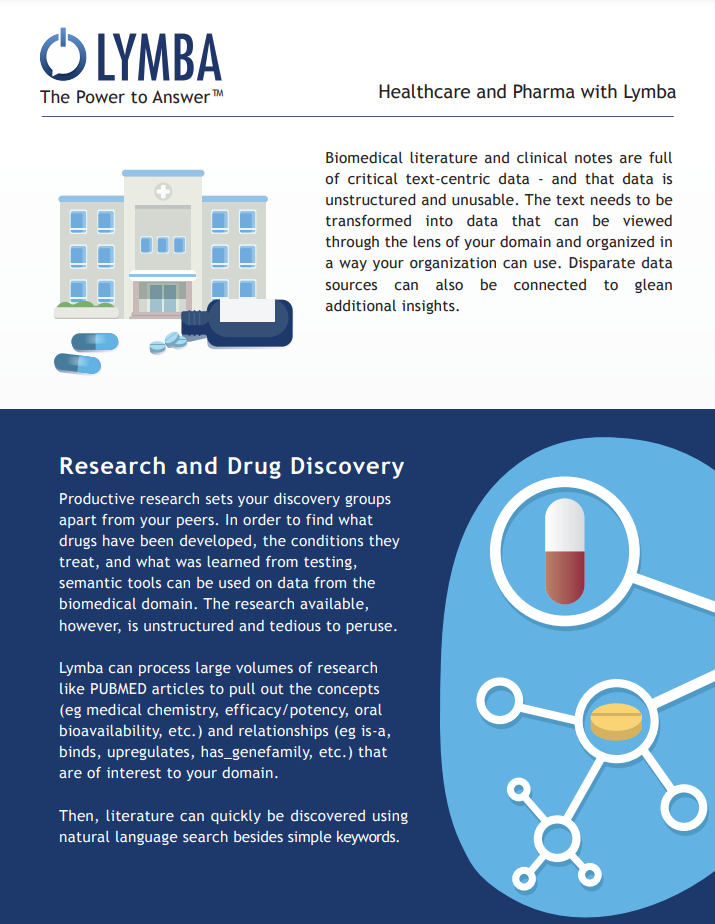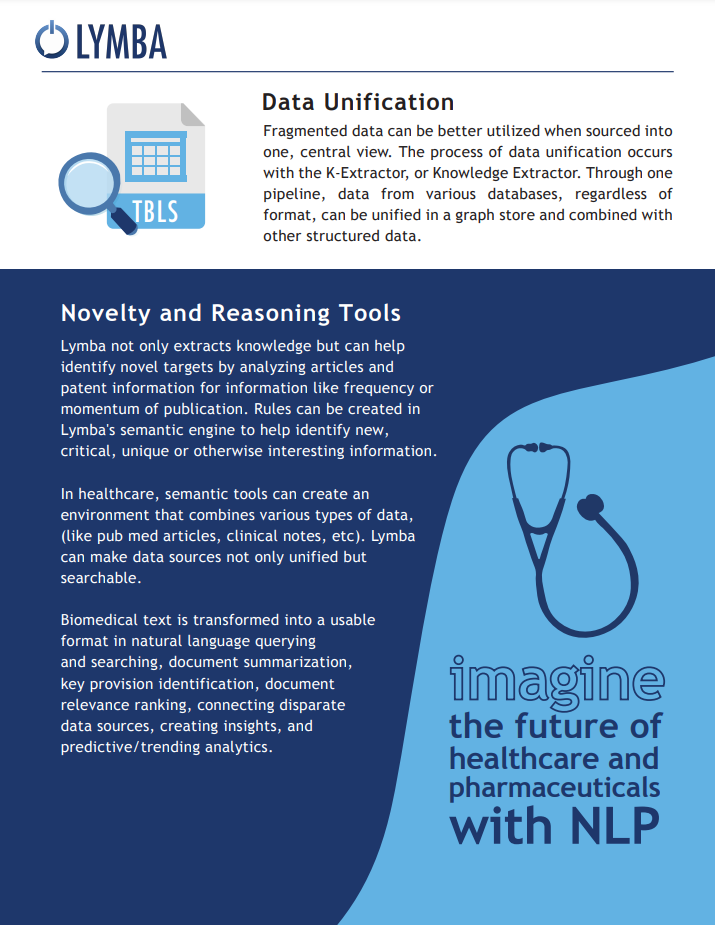Healthcare and Pharma with Lymba
PDF Transcript:
Lymba for Pharmaceuticals
Biomedical literature and clinical notes are full of critical text-centric data - and that data is unstructured and unusable. The text needs to be transformed into data that can be viewed through the lens of your domain and organized in a way your organization can use. Disparate data sources can also be connected to glean additional insights.
Research and Drug Discovery
Productive research sets your discovery groups apart from your peers. You want to be able to find out what drugs have been made so far to help the condition you’re working on and what they learned from that. The research available is unstructured and tedious to peruse.
Lymba can process large volumes of research like PUBMED articles to pull out the concepts (eg medical chemistry, efficacy/potency, oral bioavailability, etc.) and relationships (eg is-a, binds, upregulates, has_genefamily, etc.) that are of interest to your domain.
Then, literature can quickly be discovered using natural language search besides simple keywords.
Data Unification
Fragmented data can be better utilized when sourced into one, central view. The process of data unification occurs with the K-Extractor, or Knowledge Extractor. Through one pipeline, data from various databases, regardless of format, can be unified in a graph store and combined with other structured data.
Novelty and Reasoning Tools
Lymba not only extracts knowledge but can help identify novel targets by analyzing articles and patent information for information like frequency or momentum of publication. Rules can be created in Lymba’s semantic engine to help identify new, critical, unique or otherwise interesting information.
In healthcare, semantic tools can create an environment that combines various types of data, (like pub med articles, clinical notes, etc), Lymba can make data sources not only unified but searchable.
Biomedical text is transformed into a usable format in natural language querying and searching, document summarization, key provision identification, document relevance training, connecting disparate data sources, creating insights, and predictive/trending analytics.
Imagine the future of healthcare and pharmaceuticals with NLP


